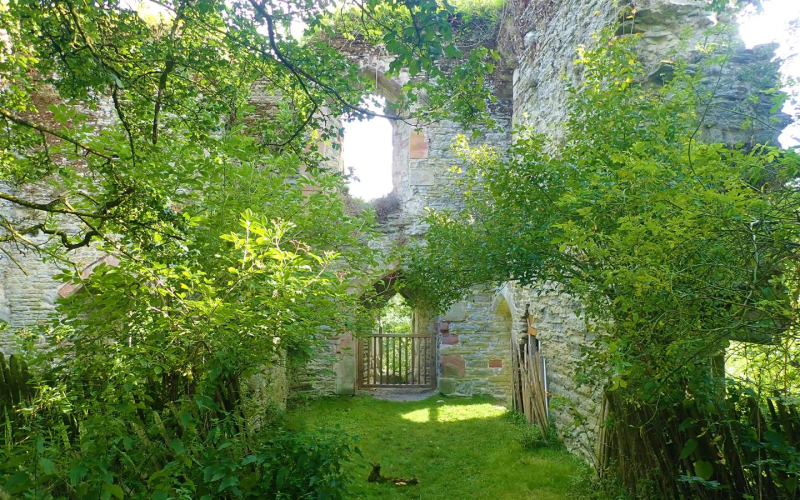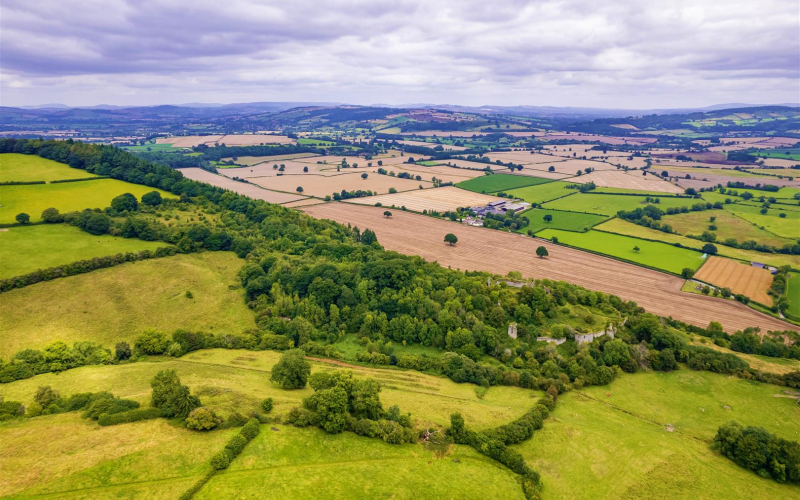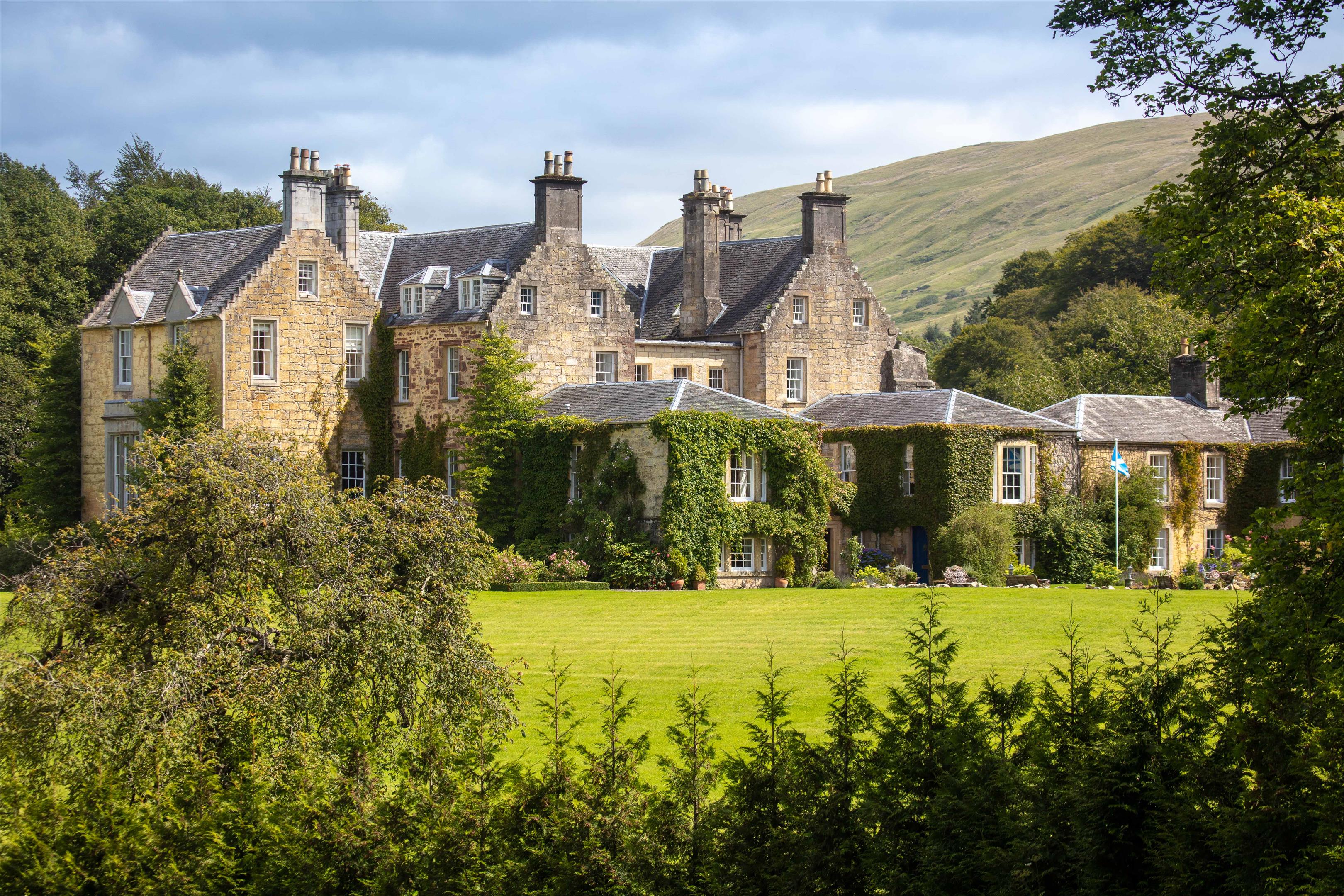A 1,000-year-old real-life 'Sleeping Beauty' castle is on sale for just £500k
An incredibly rare chance has arisen to own a spectacular and romantic medieval castle with 30 acres of land, a moat and a jousting field.

Fight your way through woods and undergrowth on the right remote, rural hill in Herefordshire, and you'll eventually find yourself at a ruined castle that's feels as if it's been standing here for centuries, waiting to be discovered. The light pours in and around ruined walls that have stood for almost a millennium, on a site that stands above the local area. This is Wigmore Castle, a ruined motte and bailey castle that dates back to 1067, and it's currently for sale at £500,000.
Wigmore Castle in Leominster is listed with Sunderlands, and there are more than just the ruins on the table: the property extends to 29 acres, and comes with planning permission to build a two-bedroom home in a secluded and private spot within those grounds. It was up for sale via formal tender earlier this year — a method which means any offer is legally binding, equivalent to exchanging contracts — but is now offered via private treaty, which will make things more flexible for any prospective buyer.

The down-side? This will be no private castle. Wigmore is a true piece of history, Grade I-listed and under the guardianship of the Secretary of State. As such, the new owner will have to keep the ruins themselves open to the public; on the plus side, the cost of maintaining the ruins is also born by the state.
All that makes perfect sense when you read the history of the place. Wigmore was built by William Fitz Osbern, Earl of Hereford, a friend and confidant of William the Conqueror. This castle was a major centre of power and hosted kings and queens for more than 500 years.

After Fitz Osbern’s death in 1071, the property was held by the Mortimer family from around 1075 to 1425. The inner part of the gatehouse and the D-shaped east tower are the main survivals from this period.
The castle was then passed to the Crown and later fell into ruin after the Civil War, and remained untouched until the 1990s, when English Heritage conserved it. The charity intentionally left the overgrown appearance — for the sake of the wildlife as well as its beauty — and describes the remains as 'among the most remarkable ruins in England'.
As the pictures show, this is a wonderful and romantic spot, both around the ruins themselves and in the surrounding land, which features a moat, woodland and even a former jousting field.
Exquisite houses, the beauty of Nature, and how to get the most from your life, straight to your inbox.

The elevated ruins enjoy splendid views across the countryside, Wigmore Moor and the Roman Watling Street that crosses it. The site is also home to rare species of wildlife and plants, including lesser horseshoe bats and ploughman’s spikenard wildflowers.
Planning permission has been granted to convert a workshop within the grounds into a detached two storey two-bedroom home. The building is adjacent to the ruins but not visible from them, and is sheltered by well-established trees in its vicinity.

Wigmore Castle, while remote, is also perfectly liveable: it's situated on the edge of Wigmore, a picturesque village with two pubs, a mobile post office, village hall, primary and secondary school.
Wigmore Castle in Herefordshire is listed with Sunderlands for £500,000.

Spectacular Scottish castles and estates for sale
A look at the finest castles, country houses and estates for sale in Scotland today.

Credit: Strutt & Parker
A magnificent castle dating back to William the Conqueror comes to the market
A thousand years of history come together at Otterburn Castle, a spectacular Northumberland castle that has come to the market.

Credit: Galbraith
An elegant Highland castle and estate on the market for the first time in eight centuries
The 560-year-old Kilravock Castle and its estate have come to the market, a fabulous opportunity — but one which will require
